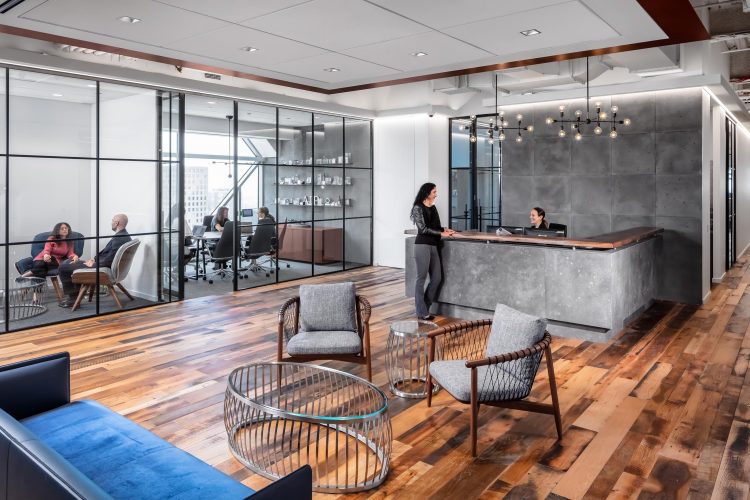Architecture Spotlight: Cheryl Smith
At NELSON, we believe architecture has the power to create a transformative sense of place, supporting communities and strengthening the fabric of cities across the nation and around the world. Recently named the #2 fastest growing architecture firm, we’re celebrating our growth, people, and projects that are boldly transforming architecture. To do so, we’ve created our latest series, “Architecture Spotlight” to introduce you to a few thought leaders within the NELSON Architecture Team. You’ll not only get an exclusive look at our people, but hear what’s in store for the future.
This week we interview Cheryl Smith, AIA, LEED AP Principal and Studio Director, NELSON Philadelphia. Keep reading to hear more about her career, knowledge, and expertise in architecture:
Q: What is your role at NELSON and how long have you been an architect?
A: I have over 30 years of experience in Hospitality, Mixed-Use, Office & Retail design. Working out of the NELSON office in Philadelphia, I am one of several Directors for our Architectural Studio. I assist clients with their projects, organize staffing resources and teams, write proposals, answer technical questions, review project documents, and work closely with contractors to see our projects through construction. In addition to my work in the local Philadelphia office, I am a member of NELSON’s Technical Leadership Council helping to develop the best practices for architecture teams across the company. Additionally, I’m collaborating on several initiatives including research on the AIA 2030 Commitment as a member of NELSON’s Sustainability Platform Committee.
Q: Tell us about some of your latest and greatest projects.
A: Over the next few months, we will be wrapping up the design and construction of the W and Element Hotels, a dual-brand, 755 room skyscraper hotel opening in downtown Philly in March 2020. Other new work includes two new high-rise buildings in the Philly. It’s an exciting time in the life of these projects as we see them rising out of the ground, seeing the team’s hard work finally come to life.
On-going work includes the Borgata Hotel Casino & Spa in Atlantic City where we have been fortunate to work with them since we were first awarded the project 20 years ago!
Q: What is your favorite architecture trend of today?
A: A favorite growing trend of mine is designing higher performance buildings. These are buildings that are more sustainable to our environment; reducing energy and water usage, and helping to reduce our embodied carbon footprint. This encompasses designing buildings with improved thermal performance and proper window to wall ratio, transforming existing structures for new use, using green roofing systems, and implementing modular systems to reduce material waste.
Q: What advice would you give a young architect?
A: I often advise young architects to follow their passion, have fun, and get involved in their community.As a young architect, I had volunteered to be a mentor for students participating in an afterschool high school program called the ACE Mentor Program where we introduced students to careers in architecture, engineering and construction management. It was both humbling and rewarding and I made connections that will last a lifetime. If there is a program like this available in your area, I highly suggest participating.
Q: What do you think the future holds for architecture?
A: The future holds opportunities for architects to improve the environment for future generations. I really believe that the way we practice architecture and the way buildings are constructed today will and must dramatically change during the next 5 to 10 years. Disruptive technologies should offer leadership opportunities for architects in the future as the integration of complex building systems will still be necessary. In the future, perhaps our virtual models are not only used for design presentations, performance modeling, and overall design integration, but also for logistics, real-time pricing, procurement, and fabrication? How we do this depends not only on the future direction of the technology disruptor but also, how we embrace the technology changes.
Q: What is the biggest challenge the architecture industry faces today?
A: One of today’s biggest challenges is managing risks, as today our building designs are more complex with little construction advances. When not managed properly, this can cause lots of problems, but incorporating best practice tools through an integrated design process will help in managing or overcoming those risks.
Q: What sets NELSON apart from other architecture firms?
A: It is the quality of the people at NELSON that differentiate us from other firms as we focus on transforming diverse practice areas into unique experiences for people. Since becoming part of NELSON, I have been amazed at the level of giving and thoughtfulness of everyone, as well as how respectful and considerate everyone is among each other. These great people qualities instill engaging team collaboration in an integrated design approach which leads to holistic solutions for our clients.
Levi’s Champs Elysées
Part III: In The City with NELSON NYC
New York City is home to the largest population of designers in the country. Over 45,000 creatives work within the city limits each day making it a global hub for inspiration and creativity. NELSON New York is proud to be part of this community, designing some of the city’s most innovative environments, from corporate offices to retail flagships. To highlight all the exciting things going on “In The City” and at NELSON Worldwide, we’re unwrapping a three-part series that introduces some of our creative leaders and shares their thoughts on New York City’s design landscape.
Part I of our three-part In The City with NELSON NYC series introduces you to Alan Dandron, Creative Managing Director of NELSON NYC.
Q: Who are you as a designer? Tell us more.
As a designer, my goal is to understand and help establish a client’s goals in order to provide the best solutions. I’m a firm believer that the best design is the product of a collaborative process. Below you’ll see a few photos one of NELSON NYC’s latest workplace projects!

Q: 6 words that describe what it’s like to be a designer in NYC. Go!
Exciting.
inspirational.
Fast-paced.
Evolving.
Flexible.
Collaborative.
Q: What are some architecture and interior design trends in NYC you’re seeing at the moment?
Today there is a big push for designers to create highly collaborative workspaces. Successful spaces respond to this by creating an environment that actively encourages and inspires teams to work together in new ways. These types of workspaces are often highly flexible making it easy for the space to change as teams and organizations do. Another trend I see in workplace design today is the creation of spaces that are informal in nature. These are unique spaces that respond to a more informal way of working resulting in spaces that are specially designed for the acitivites and processes of a specific company.
Q: How has the design landscape in NYC changed over time?
Over time, the pace at which projects are completed in NYC has changed. The design processes of projects are no longer linear, requiring an overlapping of phases. Technology, specifically Building Information Modeling software has helped us to work smarter and faster as the design landscape advances and changes.
Q: What is the biggest challenge for design/designers in NYC?
In New York City, we are, for the most part working with a very sophisticated client. This type of work requires keeping up on the latest trends in technology to convey the design story as well as keeping up with the constant shift in workplace design. Another challenge in the city is navigating the expenses of NYC real estate. It is important to keep cost in mind so that we are creating spaces that will be relevant to the life of the lease for the client.
Q: What are your favorite types of projects to work on?
My favorite projects are the ones where our teams help clients implement a change in work style or culture. Creating spaces that will reinforce a new way of working is exciting to me and I enjoy the constant collaboration with both the client, consultants, and designers these projects require.
Q: What’s it like to work at NELSON NYC?
At NELSON NYC everyone is extremely supportive of one another. There are no egos and everyone understands the value of feedback and using each other as a resource. In addition to this, everyone understands that our success is measured by the success of our clients projects.
Civis Analytics
Midpoint Magazine: The office renaissance: future of work
“A recent study suggests that 87.5 percent of global employees have missed face-to-face social interactions since remote working was introduced and while the return to the office will satisfy this craving for most, new workstyles and re-imagined office spaces will prompt a new way of communication that integrates and better serves employees in and outside the office,” – Anne Gibson
Teammate Anne Gibson shared insight into how employers can differentiate themselves to meet the demands of the evolving workplace and NELSON’s holistic approach to making the transition back into the workplace as seamless as possible. Read more with Midpoint Magazine here.
Work Design Magazine’s 2024 Next Work Environment Competition
Our Financial Services Firm Pilot Ideation Project has earned an honorable mention in Work Design Magazine’s 2024 Next Work Environment Competition. The team—Marcia Dolga, Danijel Pocanic, Nicole Fernandez, Amanda Ferri, and Maritza Estrada—explored the question: is the open office concept dead? With common concerns like distractions and lack of privacy, NELSON Worldwide’s study rethinks the open office, introducing a flexible workspace with minimal demolition and furniture solutions. The design features three distinct zones—Active, Shared, and Focus—to cater to a variety of work styles and needs.
Read more with Work Design Magazine here.
Bloomie’s Old Orchard
Designer Shoe Warehouse
Hotel Management: Wellness Healthy Habitats
“The building’s interior materials have low volatile organic compounds content. This along with the use of light-colored and warm natural materials within the Element brand also promotes a feelings of healthiness.”
Teammate Cheryl Smith describes some of the wellness elements incorporated into our project with the W Element Hotel. Read more with Hotel Management here.
